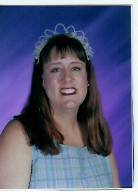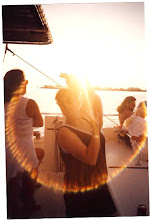
Giblin, J.C. (2005). Good brother, bad brother: The story of Edwin Booth and John Wilkes Booth. New York: Clarion Books.
Book Type/Pages:
Chapter/256
Grade Level:
seventh-twelfth grades
Curriculum Links:
social studies
Author Credibility:
James Cross Giblin has written several award winning books for young people. In the bibliography and source notes section of this book, Giblin references several biographies he used to gather information for this book. He also lists primary source documents consisting of correspondence between Edwin Booth and his friend William Winter, recollective writings done by Edwin’s daughter, Edwina, writings by John Wilkes Booth, and a memoir by Edwin and John’s sister Asia. He also lists other book titles he used to gain background knowledge.
Awards:
2006 Notable Social Studies Trade Books for Young People
Boston-Globe Horn Book Honor
Book Summary:
This is a biography of Edwin Booth and John Wilkes Booth. It is quite comprehensive, starting with their parents and concluding at the death of Edwin Booth. The book gives details about the brothers and their careers in theatre. In the background of the story is information about the rest of their siblings and their parents. Edwin went on tour with his father, Junius Brutus Booth, a well known stage actor, when he was in his early teens. His main task was to keep his father from drinking. It was during this time that he started his acting career. Edwin was described as reserved, shy, and patriotic to the Union beliefs of abolishing slavery. John Wilkes Booth, younger than Edwin by five years, was described as headstrong, wild, and impulsive. His political beliefs aligned with those of the Confederacy. The book follows both brothers in their careers, chronicles the plans for kidnapping Abraham Lincoln, the assassination, and the years after and their effects on the Booth family.
National/State Standards:
Social Studies standards:
Individual Development and Identity
Power, Authority, and Governance
Illustrations/Graphics:
This book contains many portrait photographs, newspaper headlines, playbills, and some paintings from many different sources. All photographs are in black and white. The photos were clear and gave great detail to each subject.
Access Features:
Important access features in this book include acknowledgments, table of contents, chapter divisions (there are twenty-two) with summarizing titles, bibliography, source notes by chapter, and index.
Writing Style:
The author used a very relaxed tone in his writing. The feel of it was very intimate, which I did not feel gave a professional and accurate tone. Because of the causal nature of the writing, I found myself questioning the validity of the information. There were not a lot of vivid descriptions.
Use in My Classroom:
This book is intended for older students than I currently teach. If I was teaching American history to high school students, I may use this book in a study of Abraham Lincoln and his assassination.
My Response to the Book:
I liked this book by the time I got to the ending. As I started to read it, I wasn’t enthralled. I thought about abandoning the book, but it was close to the part where Abraham Lincoln was shot and I wanted to know more about how it impacted the Booth family. Because of its length, I do not think this is a book that I would read with my students. I did learn new things while reading this book.
Related Texts:
Other books by James Cross Giblin:
Secrets of the Sphinx
The Life and Death of Adolf Hitler
The Amazing Life of Benjamin Franklin
Charles A. Lindbergh: A Human Hero



















1 comment:
Would this book make sense if you read parts of it and not the entire book?
I think there's a graphic novel about the assassination of Abraham Lincoln--it's fairly recent and tells more about Booth, his plan to kill Lincoln, and his escape and capture. It's an interesting read and good for those students who don't want to read a "typical" text.
Post a Comment